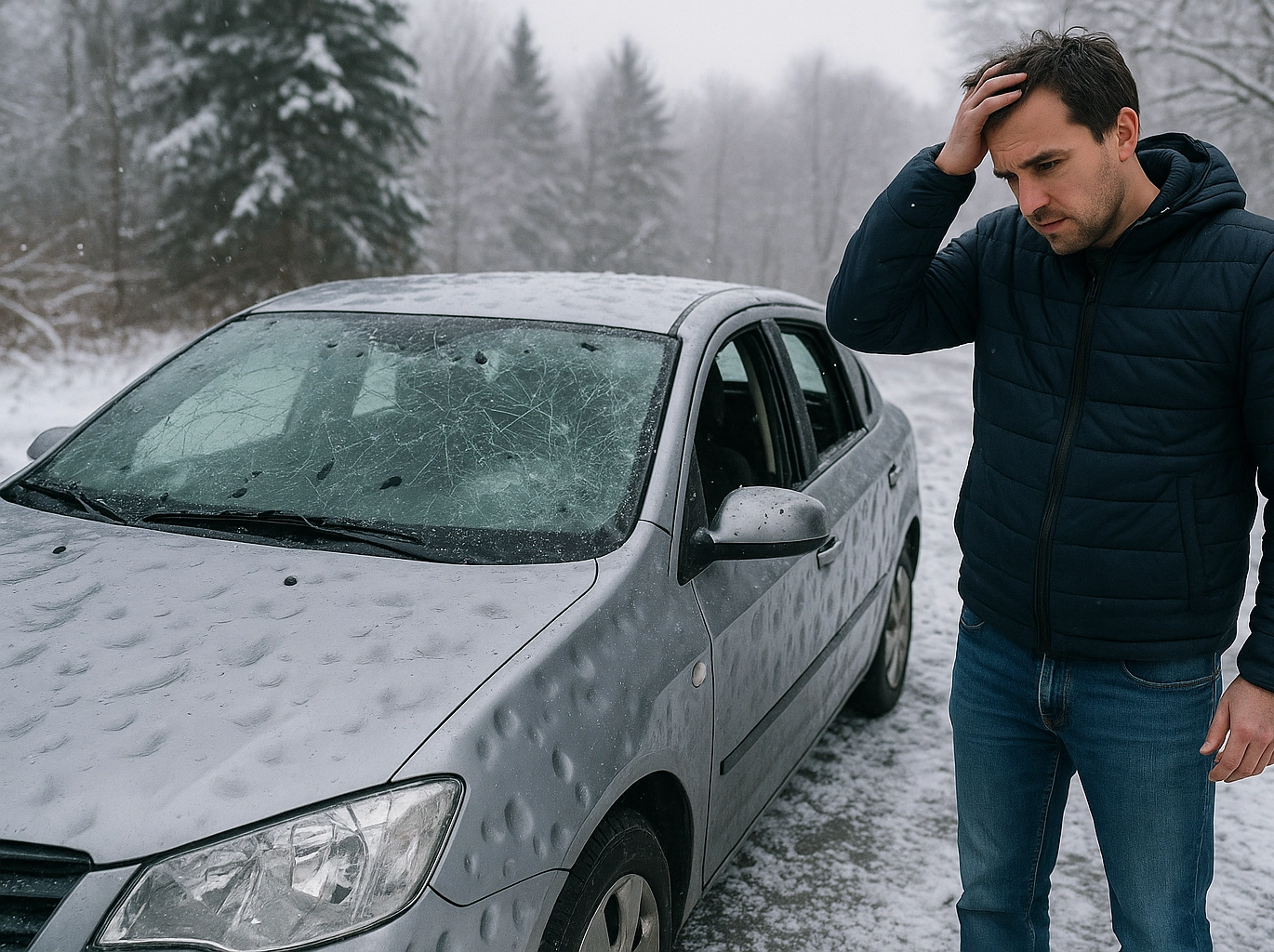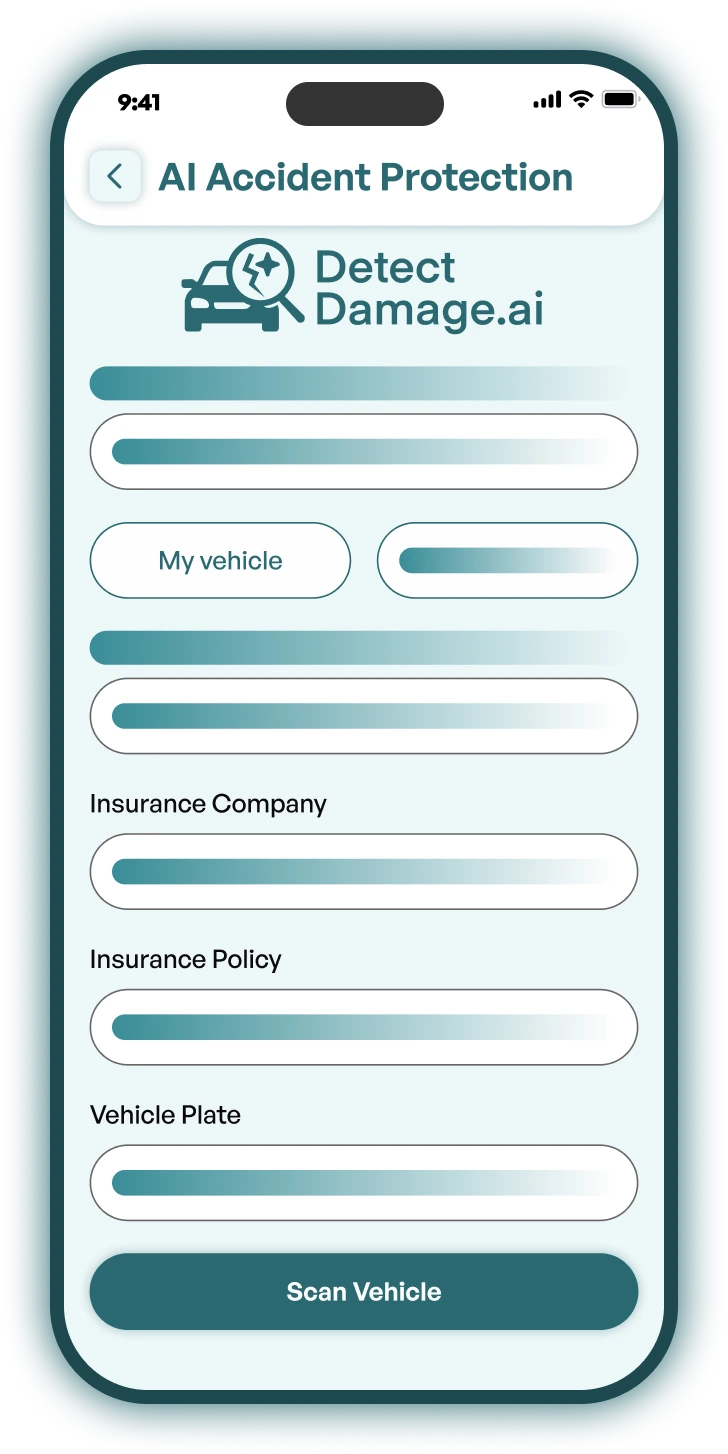What to do if my car has hail damage?
If your car has hail damage, start by contacting your insurance company to report the incident and begin the claims process. Next, get a repair estimate from a reputable auto body shop. Depending on the extent of the damage and your deductible, decide whether filing a claim is the best option.
AI Accident Protection

To streamline the process, use Detectdamage.ai to document the damage. This tool can help you quickly and accurately assess the extent of the damage, making it easier to file your insurance claim and obtain a comprehensive repair estimate.

Here's a more detailed breakdown:
1. Contact your insurance company
- It's crucial to notify your insurance provider about any hail damage immediately following the storm. Doing so will help expedite your claim process and ensure that you receive the necessary assistance. Be sure to document the damage thoroughly and provide all relevant details to your insurer.
- Before you proceed, ensure that you have your policy number and all relevant details about the damage at hand. Your insurance provider might either guide you to an authorized repair center or arrange for an inspector to evaluate the situation directly.
2. Get a repair estimate
- To obtain a thorough estimate, reach out to a reputable auto body shop or dealership. This will guarantee that you get an in-depth evaluation of the required repairs and the associated costs.
- When faced with considerable damage, like broken glass, deep dents, or major paint problems, it's best to seek help from a qualified professional who can provide the necessary expertise and solutions.
3. Evaluate your options
- It's essential to take a deep dive into your insurance policy to understand every detail of your coverage and the associated deductible amounts. By doing so, you'll be better equipped to make informed choices regarding your insurance requirements. This understanding can significantly impact your financial planning and help you choose the right coverage that fits your needs.
- Evaluate if the costs associated with repairs surpass your deductible limit. In cases where the damage is minimal, it could be more economical to pay for the repairs out of pocket, as this may help you steer clear of a rise in your insurance premiums.
4. File a claim (if necessary)
- Should you choose to initiate a claim, your insurance provider will assist you every step of the way, ensuring you understand the necessary procedures and documentation required. They will be there to answer any questions and provide support throughout the entire process.
- They might give the green light to the repair estimate, coordinate the necessary repairs, or provide reimbursement for the expenses incurred during the repair process.
5. Schedule repairs
- After your claim receives approval, it's time to arrange for the essential repairs at the auto body shop. Make sure to contact them to set up an appointment that works for you, and discuss any specific details about the repairs needed for your vehicle.
- It's a good idea to obtain several estimates from different service providers. This way, you can compare their offerings and ensure that you're receiving the highest quality service at the best price.
6. Protect your car
- To prevent additional harm to your vehicle, it might be wise to invest in a high-quality car cover. This will shield your car from the elements, especially during hail storms, ensuring that it remains in pristine condition for years to come. A durable cover can be a smart long-term solution to safeguard your investment.
- Utilizing covered parking is a smart choice, especially when it comes to safeguarding your vehicle from the damaging effects of hail. If you have access to a covered parking space, make sure to take advantage of it whenever severe weather is forecasted. This simple action can help maintain your car's exterior and prevent costly repairs.
Frequently Asked Questions
When returning a leased car, you should prepare by cleaning the vehicle, documenting its condition, addressing wear and tear, and ensuring all required documents and items are present. It's also crucial to understand the collection procedures and potentially arrange a pre-lease return inspection to address any damage.
What to do next?
What to do next?
If you're involved in a car accident, the most important thing is to prioritize safety. Stop your vehicle safely, turn on your hazard lights, and check for injuries. If anyone is hurt, call for emergency services immediately. Exchange details with the other driver (if any) and any witnesses, but avoid admitting fault or apologizing at the scene. Document the accident with photos or videos and report it to your insurance company.
What to do next?
What to do next?
When purchasing a car, it's essential to conduct a thorough inspection to ensure you're making a sound investment. Carefully examine the vehicle's exterior and interior, verify all documentation—including the V5C logbook, service history, and MOT certificate—and ensure that all features and functions work as expected. A test drive is also crucial to evaluate the car’s performance and handling.
What to do next?
What to do next?
When returning a rental car, ensure it's in the same condition as when you picked it up, refuel the tank to the agreed level, and return it to the designated drop-off location on time. Remember to collect all your belongings, and document the car's condition with photos or videos.
What to do next?
What to do next?
